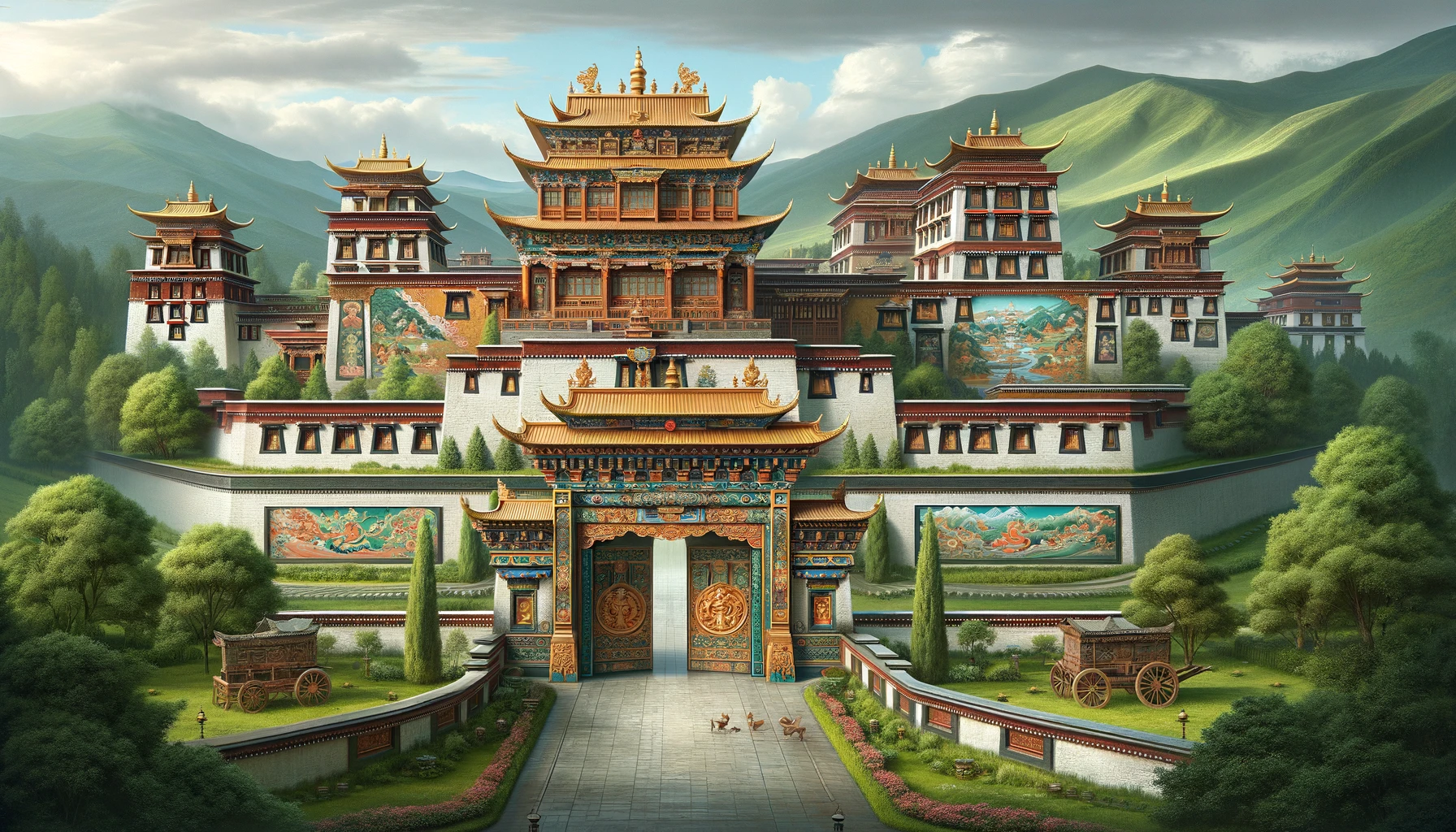
Dechen Kalsang Phodrang: A Historical Treasure in Shigatse
Dechen Phodrang (བདེ་ཆེན་ཕོ་བྲང་། ), the exquisite summer palace of the Panchen Lamas, located just 500 meters north of the Tashilhunpo Monastery in Shigatse city's southwest. Known as the "New Palace," it was initially constructed in 1844 by the 7th Panchen Lama and later rebuilt after being destroyed by a flood in 1954.
The Historical Evolution of Dechen Phodrang
Dechen Phodrang, the summer residence of the Panchen Lamas, has a rich history. Originally, the summer palace, known as "Gongjue Linka", was built by the 7th Panchen Lama, Tenpai Nima, in 1844. This palace, featuring temples, a golden hall, and a protector deity shrine, was unfortunately destroyed by a flood in 1954. Following Premier Zhou Enlai's directive, the Chinese government allocated 500,000 silver dollars to construct the new palace, Dechen Phodrang, also referred to as the "New Palace."
Location and Architectural Splendor
Situated in the west of Shigatse city and merely 500 meters north of Tashilhunpo Monastery, Dechen Phodrang comprises both the old and new sections. The main building houses the Panchen Lama's living quarters, office, and five large scripture halls with over one hundred Buddha statues. The new palace's architecture blends traditional and modern styles, featuring a majestic and elegant design. The palace grounds are lush with greenery and flowers, creating a pleasant and picturesque environment.
Artistic and Cultural Significance
The first gate of Dechen Phodrang is adorned with four octagonal red pillars and a doorway featuring relief sculptures of fierce beasts, soaring dragons, and various floral patterns. The walls on either side of the gate are painted with clouds, tigers, dragons, human figures, flowers, and Buddhist story murals, showcasing exquisite artistic skill and lifelike detail. Entering the second gate, visitors find themselves in a courtyard leading to the magnificent new palace. The palace is surrounded by beautifully landscaped gardens and includes the Panchen Lama's bedroom, reception hall, scripture halls, protector deity shrine, and other significant areas. The southeast side of the new palace, known as "New Palace Linka," is one of the four major Linkas in Shigatse.
Explore Dechen Phodrang to experience the splendid blend of history, art, and architecture that epitomizes Tibetan culture and the Panchen Lama's legacy. This summer palace is not just a historical site but a living representation of Tibet's rich religious and cultural heritage.
Architectural Splendor and Artistic Heritage
The main buildings of Dechen Phodrang, beyond serving as the residence and office of the Panchen Lama, house five scripture halls and over 100 Buddha statues. The most notable feature is the mural of "Drogon Choegyal Phakpa meeting Kublai Khan," renowned for its historical significance. The architectural style of Dechen Phodrang beautifully blends traditional and modern elements, adorned with lavish and unique decorations. On January 28, 1989, the 10th Panchen Lama passed away in this palace, and since then, it has been open to the public, attracting countless visitors who come to pay homage.
Travel Tips for Visiting Dechen Phodrang
- 1. Ticket Information: Admission is priced at 30 RMB per person.
- 2. Visiting Hours: The palace is open from 9:30 AM to 5:00 PM.
- 3. Getting There: Visitors can take a Taxi from the city centre or enjoy a leisurely walk to the palace.
Explore the Dechen Phodrang in Shigatse for a glimpse into the rich cultural and religious history of Tibet. This summer palace, a blend of architectural magnificence and spiritual legacy, offers an insightful journey into the lives of the Panchen Lamas and the artistic heritage of Tibetan Buddhism.
https://bit.ly/48wmzDn
Comments
Post a Comment